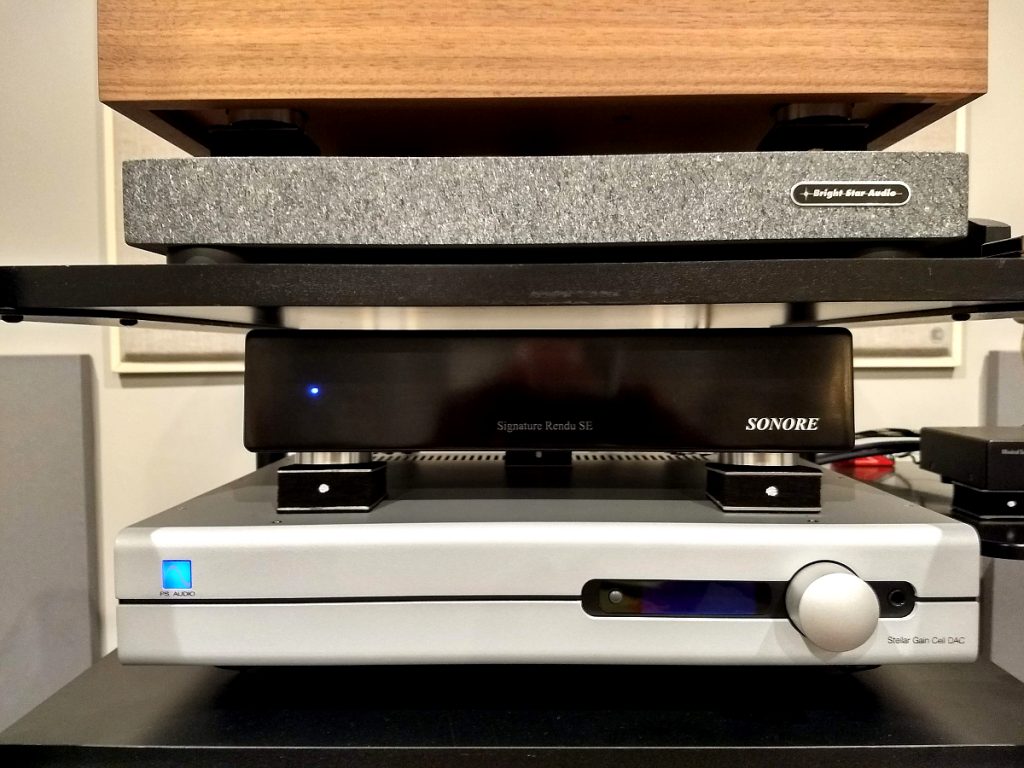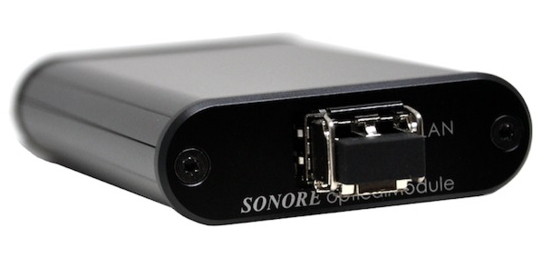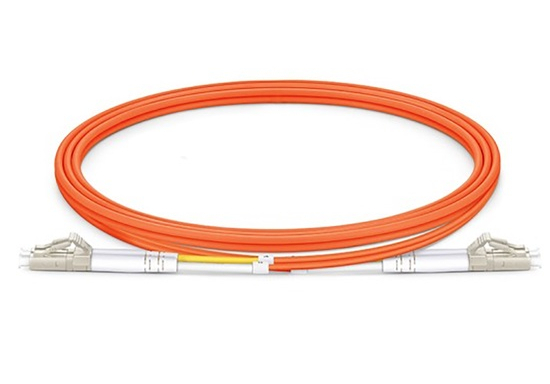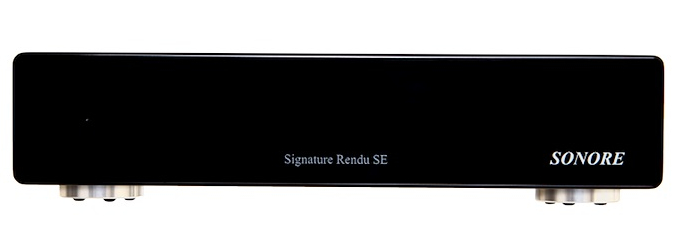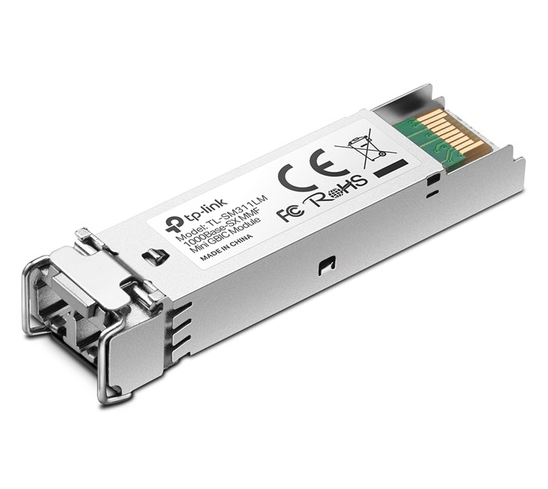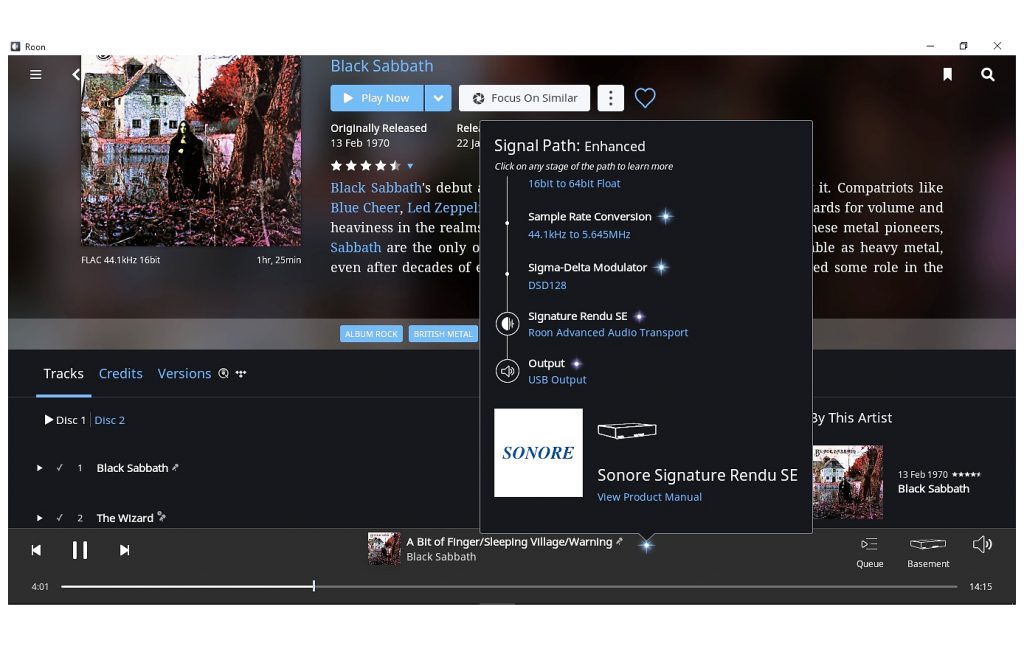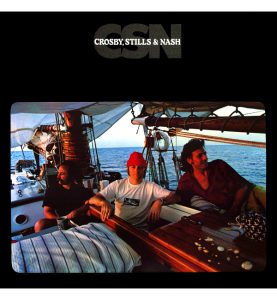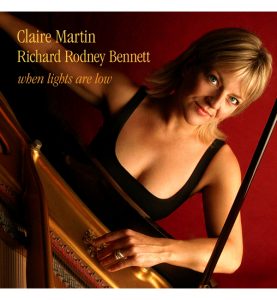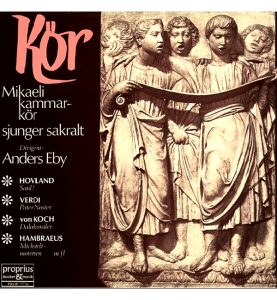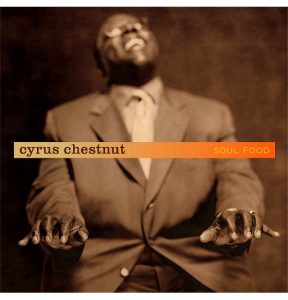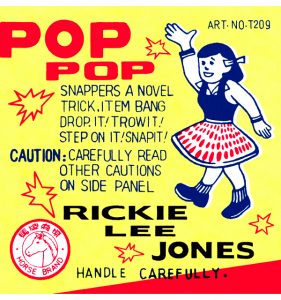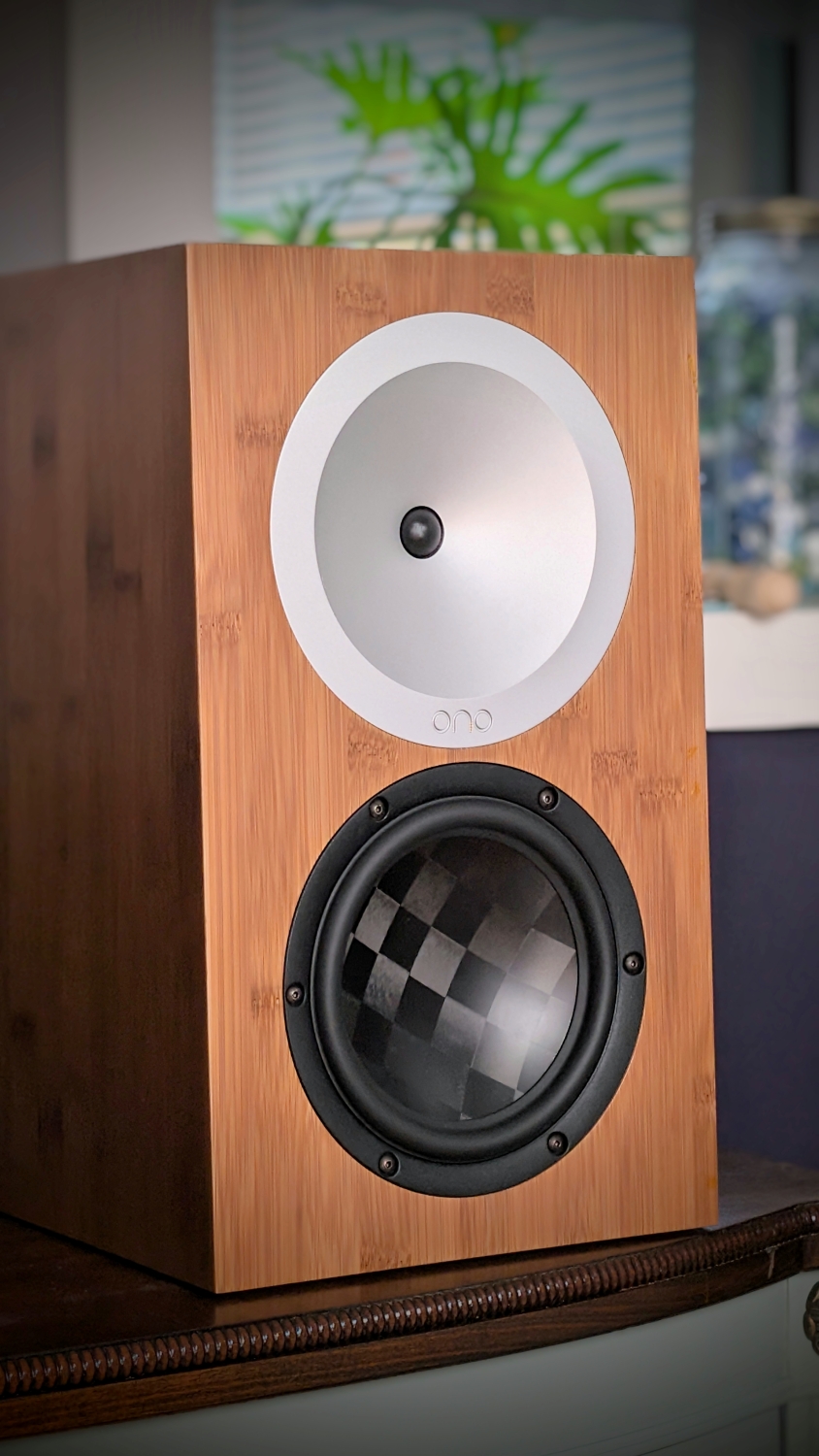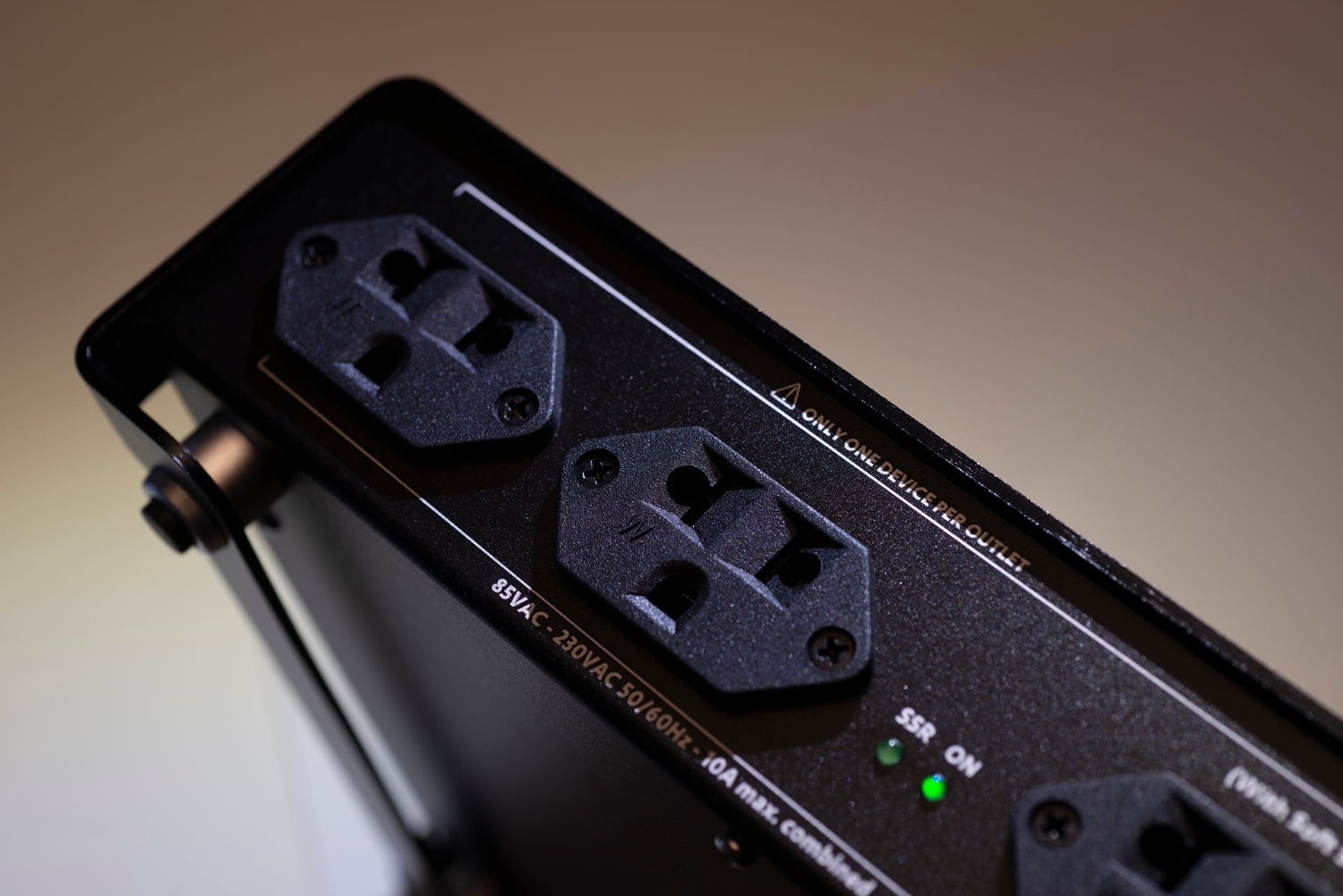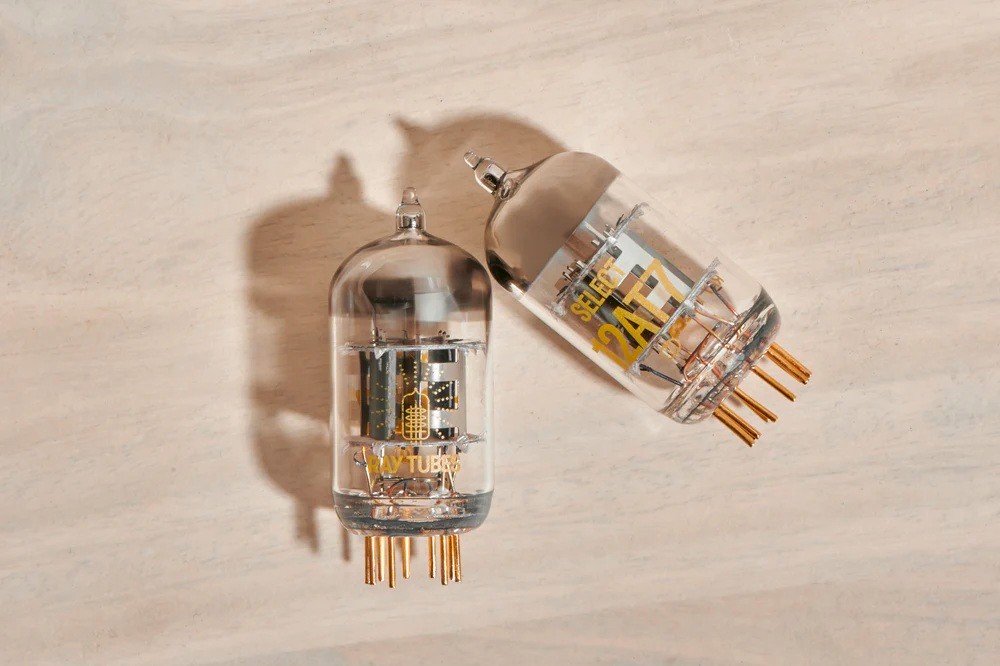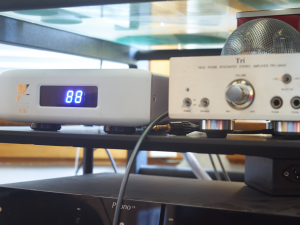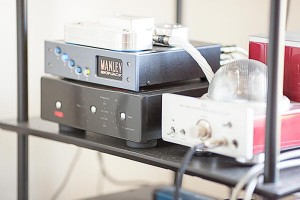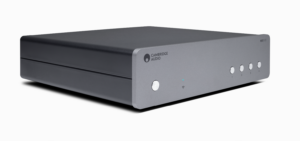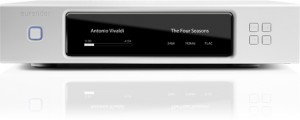Since Adrian Lebena reached out to me three years ago with the offer to review Sonore's first product, the microRendu, a Sonore streamer has been in my system ever since. The microRendu was amazing—especially when paired with Sonore's Signature Linear Power Supply. It took my streaming experience—which previously had been restricted to bandwidth-limited and feature-limited HRT units—to a stratospheric level of enjoyment. You can read that review HERE. And boy, did the cost-no-object LPS alter my impression of the importance of the power supply in any streaming setup! When the ultraRendu arrived with its substantially larger chassis and across the board circuit improvements, it bettered the microRendu in every conceivable way. The improvements in clarity and transparency of sound—when used in combination with the Uptone Audio LPS-1 power supply—has made it my reference streamer for the last few years. You can read that review HERE.
My use of a streamer and the ancillary devices associated with it has, to this point, been managed with conventional copper-wire connections via my network hub and switch combination. While I've noticed some manufacturers pushing optical alternatives to copper—the huge advantage being the fact that an optical connection doesn't transmit any noise—I haven't been in the correct scenario to explore that option. Until now. And the benefits of an optical connection aren't limited to a simple reduction of line noise; optical signal transmission also provides increased bandwidth, faster transmission speeds, and improved reliability. That said, off-the-shelf optical devices are typically built to a price point, and often with less than optimum parts quality. Sonore is now offering their System Optique, which offers the advantage of adding optical signal transmission from your network hub to your existing streamer. In my view, System Optique is a two-fold proposition: it offers users of conventional copper-wired systems the ability to convert their signal transmission to fiber optical. And it offers current users of fiber optical transmission the possibility of incorporating purpose-built, audiophile quality devices into their systems. For the opportunity to experience a substantial improvement in sound quality.
And with the introduction of Sonore's latest generation of streamers, the Optical Rendu and Signature Rendu SE, they're giving users the opportunity to completely remove copper connections from the streaming equation. While the Optical Rendu outwardly looks identical to the ultraRendu, the System Optique board inside is a radical improvement over the board employed in the uR. The new board utilizes eleven audiophile grade, ultra-low noise linear regulators, plus a pair of fixed frequency, high quality, ultra-low jitter FEMTO oscillators; it offers much greater rejection of noise than Sonore's previous design. Both the Optical Rendu and the Signature Rendu SE share the same System Optique board; the Signature Rendu SE takes the entire optical streaming experience and hot-rods it to a level that's an audiophile's dream.
System Optique originally was conceived when the folks at Sonore realized that customers were using off-the-shelf optical conversion solutions with the microRendu, mainly for galvanic isolation. And while those setups isolated their systems from the noise on the network, they didn't isolate them from the noise introduced by the low-quality circuits and substandard power supplies employed by those off-the-shelf products. And they also found that customers were tinkering with mods to off-the-shelf equipment that were, to say the least, exacerbating the situation. Already developing a design for an optical renderer, Sonore then started working on designs for the ancillary equipment that would make audiophile level optical streaming a reality. At first, Sonore experimented with off-the-shelf Ethernet-to-fiber optic conversion units that were of sufficiently high quality, often upgrading their performance level by using a low-cost but significantly better than stock linear power supply. They then moved to building their own equipment; the result was the Optical Module, which was the first Ethernet-to-fiber optic converter that employed audiophile grade components. The System Optique board and the Optical Module are the heart of Sonore's System Optique.
The Optical Module is surprisingly small; it incorporates a pass-thru system, where a standard Ethernet jack connects it to your Gigabit, 1000 base-SX network. At the opposite end of the unit is an input for a standard SFP optical transceiver, which is provided. The Optical Module employs four high quality, ultra-low noise linear regulators, along with a fixed frequency, high quality, ultra-low jitter FEMTO oscillator. There's also a jack for a power supply; compatible units are available from a variety of manufacturers, such as CIAudio, Teddy Pardo, and Uptone Audio, as well as from Sonore—theirs is one of the most affordable. If you're connecting to an optical streamer—like the Optical Rendu or Signature Rendu SE—all that remains is to connect a Sonore Certified fiber optic cable. In this scenario, one Optical Module is all that's required. If you're planning on connecting a conventional streamer, you'll need a second Optical Module and power supply. It will connect to the fiber optical cable between the two Optical Modules, and then to your streamer with a standard Ethernet cable. I wouldn't skimp on the power supply or the cabling here; there are guidelines available on Sonore's website and on their partner support forum on the Audiophile Style (Computer Audiophile) website. Any off-the-shelf equipment recommended for use in the System Optique has been thoroughly tested by Sonore to confirm complete compatibility.
While I'm basically more of a meat-and-potatoes kind of guy, and the baseline Optical Rendu would probably have sufficiently wowed me, Adrian wanted me to experience optical streaming in its highest form. So the review unit I received is the Signature Rendu SE with the Tier I upgrade package. It's an entirely new unit from the ground up, with a new chassis and casework that is significantly improved over that of the original Signature Rendu. Additional refinements included in the new baseline Signature Rendu SE are the new System Optique board, an SFP fiber transceiver, upgraded custom footers with Sorbothane inserts, improved grounding, an improved power supply, and a certificate for a free 60 day trial of Roon. All aimed at bringing the user closer to the very best sound quality available. The Tier I upgraded unit I received adds a Synergistic Blue Fuse ($150 retail) and an RFI-to-Heat shield, which further protects the Signature Rendu SE from outside interference. The Signature Rendu SE is built into what I'd call a three-quarter case, and to a much higher standard than anything else Sonore has produced thus far.
The Sonore Signature Rendu SE System Optique, purchased new, offers the baseline model and two tiers of upgrade options. There are a substantial number of existing Signature Rendus in the field that can be upgraded to Signature Rendu SE status, and there are three upgrade tiers available to rebuild them to the desired level of performance. Among the upgrades available is Sonore's Turbo Linear Power Supply, which is built using the latest and fastest linear regulators; Adrian tells me it's a substantial improvement over the baseline power supply. If you are a current Signature Rendu owner and haven't already done so, Sonore strongly recommends that you replace the stock fuse with a Synergistic Black or Blue. Sonore will add the fuse to your upgrade for an additional $120—that's a savings of $30 vs. purchasing the fuse outright. With the myriad of upgrade possibilities available, current owners can contact Sonore to get pricing and turnaround time information for the upgrade process.
As I previously mentioned, unless you're already using an optical network as part of your system setup, with any of the new purchase or upgrade options, you'll also need an Optical Module. And even with an existing optical network in place, upgrading to the Optical Module setup makes perfect sense. It's built using a much higher grade of parts and construction standard than any off-the-shelf units available, and in terms of guaranteeing that you're getting the very best sound possible, it's a no-brainer. It retails for $249, and includes an SFP fiber transceiver. And you'll need a certified optical cable, which retails for $20 for a one meter cable. And don't forget the power supply!
For my setup with the Signature Rendu SE, I simply placed the Optical Module between my Gigabit 1000 base switch, and attached the supplied optical cable directly to the Signature Rendu SE. I happened to have on hand a compatible Uptone Audio LPS-1 power supply for the Optical Module that worked well for my needs during the review process. I've been using Roon for a couple of years now, and I'm very comfortable with it; it took about sixty seconds for Roon to find the Signature Rendu SE. My laptop contains Roon's core; its hardwired connection is to the same network switch as my other audio equipment. I don't know if this makes any difference or not, but it at least makes me feel better that the feed from the entire network is now going to the Signature Rendu SE via optical cabling. I know everything seems to be going wireless these days, but I feel much more comfortable with a hardwired connection. Zero glitches, you know?
I use a ten-inch Android tablet to control Roon from my listening chair. I also have a 2TB external hard drive attached to my laptop; it contains most of my music files, which are a mixture of high-res FLACs, various levels of DSD, and about 2500 CDs that I've ripped to 44.1 lossless uncompressed .flac. I also access Tidal and Qobuz hi-res accounts via Roon, which gives me a pretty unlimited selection of music to choose from. The laptop sits near the equipment rack, across the room from my seating position, and is perfectly quiet, so it doesn't intrude on playback at all. My DAC is the PS Audio Gain Cell DAC/Preamp, and over the period of several weeks the Signature Rendu SE has been placed in my system, there have been zero issues or glitches. I also use AV RoomService EVPs (Equipment Vibration Protectors) underneath all source equipment—they're an excellent product and add a superb measure of additional isolation to any spurious vibrations.
I listen to a pretty broad selection of musical genres from day to day, and like most audiophiles, I do have certain "go-to" discs that I use for evaluation of various aspects of system performance. The very first selection I listened to was a 44.1 .flac rip from Crosby, Stills and Nash's CSN, the track "See the Changes." This album was the follow up to Déjà Vu, and was the last album recorded by the trio where their voices weren't augmented by background singers. Written by Stephen Stills, his lead vocal is front and center, but tends to get buried in the background by some digital equipment. The stage position of the three singers is miraculously vivid, and Stills' lead vocal is clear and resounding. The mixture of the acoustic guitars with the remarkably rich harmonies from the three singers is so very lifelike and enjoyable, I hit the replay button several times on the tablet. With this music playing over the Signature Rendu SE, I just couldn't get enough!
For female vocals, I have a couple of albums by British jazz singer Claire Martin on the Linn label; her singing is superb, and the instrumental support is pretty magnificently recorded. And the albums are HDCD encoded, so the 44.1 .flac rips playback as 24-bit files. One of the albums, He Never Mentioned Love, features a superbly recorded version of the Johnny Mercer tune "Traveling Light," where Claire Martin's voice hovers over a walking bass line. Both the voice and the acoustic bass are rendered with highest fidelity; in my new listening room, I can actually play this song at reference levels without the entire house vibrating in harmony. A second album, When Lights Are Low, features a pair of tunes that are absolute show-stoppers, "Fools Fall In Love" that segues into "I've Got A Right To Sing the Blues." On each, her smoky-sweet alto voice is only accompanied by the Steinway piano of Richard Rodney Bennett; the effect is absolutely stunning, and the Signature Rendu SE presents both voice and piano as perfectly rendered as I've ever heard them on any system. Just remarkable!
Of course, I had to drag out one of my "desert island discs," and one that gave both Adrian and Jesus at Sonore fits during my initial experience with the microRendu. It's Kor, on the Swedish Proprius label, and is in my opinion, the finest disc of choral singing ever recorded. You can read about that HERE, if interested. Anyway, the 44.1 .flac rip is one of the best sounding digital files in my collection, bar none. My intent was to simply skim through the album, but I ended up listening to the entire thing—as played through the Signature Rendu SE, this is most analog sounding portrayal of this music via digital file source I've ever heard. Simply astounding.
I stumbled across a CD recently by Cyrus Chestnut, Soul Food, a 2001 recording where he steps out of his usual piano trio format and adds a full horn section. It turns into a real blowing session, and the title track via 44.1 .flac rip is astonishingly good, both in terms of performance and playback via the Signature Rendu SE. This is another album that's so very tasty, it bears up well to repeat listenings, and is rendered here with absolute fidelity. If you've never heard Cyrus Chestnut, he's one of the very best jazz pianists currently out there and all his albums are exceptionally well-recorded with soulfully magnificent playing.
And, of course, we also have Rickie Lee Jones' Pop Pop, another of my "desert island discs," and one that, despite being a digital recording, will help you sort the wheat from the chaff when trying to choose a streamer. Recorded in a spare and minimalist style, it features Rickie Lee singing an assortment of cover tunes ranging from Jimi Hendrix to Tin Pan Alley, and the supporting cast is remarkably good. The opening track of my 44.1 .flac rip, "My One and Only Love," features a superb acoustic guitar intro by Robben Ford followed by Charlie Haden's acoustic bass that absolutely plumbs the depths of your listening environment. It's absolute ear candy; RLJ's voice is perfectly quirky and the sound quality is to die for—this is another disc I've never been able to play in any of my previous systems at reference levels without it distorting all over the place. That's no longer a problem! Something here for everyone, and the Signature Rendu SE renders it with unmatched fidelity.
I know that most of the recordings I auditioned here are from CD-quality sources, but to be honest, so little of the music that I truly enjoy listening to is available via any high-res audio format. There was a really long thread recently on Facebook about "Is CD-Quality Sound High Resolution"? Tons of audiophiles and audio writers chimed in. The results were pretty evenly split, but in my book, we're finally in a position to experience CD sound optimally played back. Really, it's more like, optimally decoded. This is the golden age of digital file playback; CDs sound better than ever before, and downloads and rips of those CDs sound especially compelling through a superb unit like the Signature Rendu SE.
I can go on and on here; the point is this: the Sonore Signature Rendu SE delivers streamed music with a level of fidelity and musicality that's unlike anything I've experienced yet. And I have to give a great deal of the credit to the System Optique. With my PS Audio DAC, it's a match made in heaven, delivering greatly improved musical detail and transparency, and in spades. Whether listening to a soloist, small groups, or an entire orchestra, the capture of the recorded acoustic and soundstage presented offered tremendous realism beyond any DAC/streamer combo I've heard. And here's the icing: with really well recorded music, I could play the digital files, then follow with the LP, and the sound was nearly indistinguishable. More so than with any digital playback I've yet experienced. Adrian told me this was the most analog-sounding device they'd ever made, and he's not lying. My ears tell me that the Signature Rendu SE is the finest streamer currently available, regardless of price. Very highly recommended!
Sonore Signature Rendu SE System Optique with Tier I Upgrade
MSRP: $3,745.00
Sonore/Simple Design, LLC
All images courtesy of Sonore and the author




